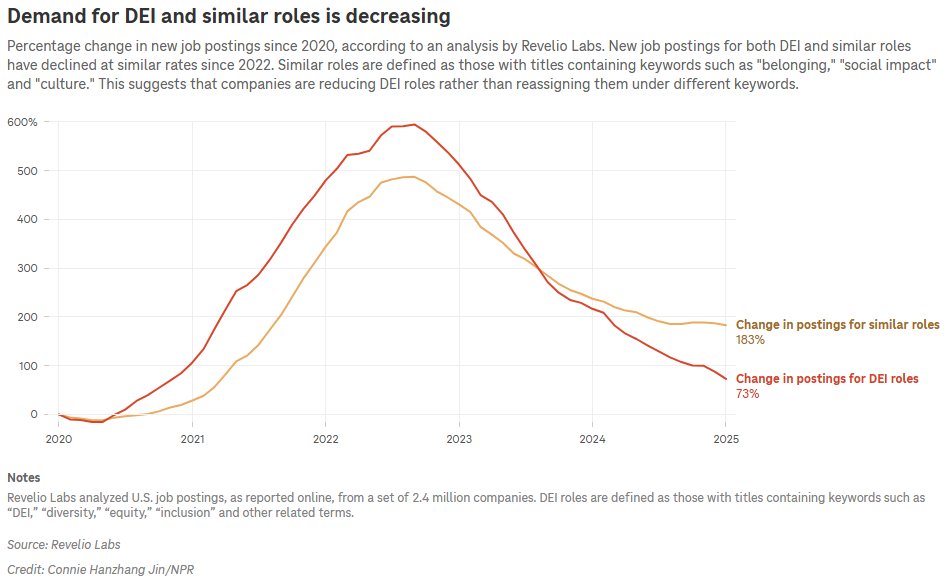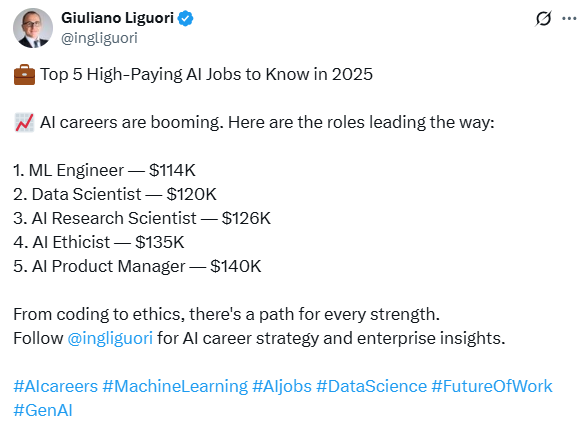Let me tell you a story, two stories. One real and sad.
The other, fictional but possible. Inspiring.
Real and sad
Candace Byrdsong Williams used to walk into tech boardrooms like she was carrying both a sermon and a scalpel. A Bible verse in her bag, a binder full of DEI metrics in her hand. She’d carved out a career. 18 years of climbing ladders made of thin promises and thick glass ceilings. She was set to become a Chief Diversity Officer. But instead of the C-suite, she got the boot. One more casualty in America’s sudden corporate amnesia about race, equity, and uncomfortable truths.
Now she sits in her sunlit North Carolina living room, the kind of space where ambition goes to quietly bleed out. Her girls’ photos are on the mantle. The air smells like jasmine, maybe defeat. Her favorite scripture — “God is within her, she will not fall” — hangs over a stack of leadership books written for jobs that no longer exist. She flips open The Chief Diversity Officer like it’s an obituary. And maybe it is.
“I was hoping that was going to be the next role,” she says, “prior to the current political climate.”

Fictional, but possible. Inspiring.
Meanwhile, on the Other Side of the Storm…
Sarah Chen, saw the next wave coming and decided to pivot, not waiting to drown. When companies started swapping DEI for PR damage control, she rebranded. Moved fast. She took her bias-analysis brain, her stakeholder jiu-jitsu, and her corporate thick skin and walked it straight into the AI ethics boom. The same skills. Double the pay. Less hostility. More influence.
She’s not fighting to be heard anymore. She’s sitting in on engineering reviews and redlining machine learning code for bias before it goes live. The same battle, different battlefield.

$2.6 Billion in Arbitrage
Between 2023 and 2025, more than 2,600 DEI jobs vanished. Not reduced. Not “reimagined.” Erased. At the same time, AI ethics jobs skyrocketed. Colorado State called it the #1 most in-demand AI job for 2025. Salaries crossed six figures like it was nothing. And companies? Desperate for people who could decode bias without burning the building down.
What happened was simple:
- The DEI label got political.
- The problems stayed.
- The solution? Rebrand, reframe, relocate.
You don’t fight bias in conference rooms anymore. You do it in code reviews and compliance audits. Welcome to the future.

DEI’s Demise — and Who Saw It Coming
Some saw it as betrayal. Others called it a market correction.
When George Floyd hit the world like a tuning fork in 2020, companies responded. Loudly. Statements poured in. Money got pledged. Chief Diversity Officers were hired like the problem could be solved with a title and a tagline.
But for some Americans, the response felt performative. They saw DEI not as progress, but politics in corporate drag. And when the Supreme Court struck down affirmative action in higher ed, it sent a signal: the winds had changed.
Progressives called it a rollback of rights. Conservatives saw it as a rebalancing of fairness — an end to race-based preferences in hiring and education.
Then came Trump’s return. With a megaphone. DEI, he said, was radical ideology dressed up as workplace policy. Companies, already wary of lawsuits from both sides, began quietly downsizing diversity roles. Not because they suddenly believed in discrimination, but because no matter what they did, someone was ready to sue.
And in that legal and cultural crossfire, thousands of jobs vanished.
Some companies genuinely believed the programs weren’t working. Others feared the optics. A few simply preferred not to be caught in the ideological tug-of-war.
The truth? There’s some merit on both sides.
- DEI wasn’t always implemented well. Some programs were symbolic. Others lacked ROI.
- But the problems DEI was built to solve? Still real. Still measurable. Still present.
And that’s where the irony gets sharper: the skills honed in those DEI trenches? They’re now vital in the one place both sides of the aisle agree needs oversight — AI.
The Skills That Survived the Massacre
The job title died. But the skill set didn’t.
When the dust settled, something strange happened: recruiters didn’t stop calling. They just started using new words. “Trust & Safety.” “Ethics & Integrity.” “Responsible AI.”
Turns out, the same skills that kept workplace culture from imploding are now the ones keeping algorithms from spiraling into lawsuits.
Let’s break it down:
- Conflict navigation? Now it’s about mediating between developers and regulators.
- Bias recognition? Same task, just now it’s pattern recognition in training data instead of corporate policy.
- Stakeholder communication? You’re still bridging impossible worlds, only now it’s ethics teams and engineers who don’t speak the same language.
What’s old is new. What was undervalued is now indispensable. And companies are scrambling to translate soft skills into hard tech outcomes.

Even many DEI skeptics, particularly on the political right, are beginning to admit that AI can’t be left entirely unchecked. They don’t want ideology coded into systems any more than they want blind trust in automation. For them, algorithmic fairness isn’t about identity. It’s about accuracy, transparency, and the freedom to challenge assumptions.
Their concern? That unchecked AI could become the new bureaucracy: opaque, bloated, and impossible to appeal. They worry that unelected engineers may wind up shaping policy more than actual legislators do. And they’re right to be wary. If bias in HR was controversial, bias in algorithms is existential.
Representative Marjorie Taylor Greene wrote, “We have no idea what AI will be capable of in the next 10 years… Giving it free rein and tying states’ hands is potentially dangerous”
Republican Representative Obernte stated during a markup session, “No one is suggesting that AI should be unregulated. … But the appropriate body for doing that regulation is the U.S. Congress.”
So yes, the future needs oversight. But not just the kind that checks identity boxes. It needs people fluent in systems, accountability, and the law of unintended consequences. People who know how to make human judgment legible to machines and vice versa.
That includes former DEI pros. It also includes ethicists, engineers, veterans, and economists. Anyone capable of asking hard questions without dragging ideology into every room.
The new battlefield isn’t about race or gender. It’s about who controls the switch. And whether someone’s watching when it flips.
The New Gold Rush: Who’s In and Who’s Still Locked Out
The AI ethics job market is booming. But it’s not a free-for-all. It’s a gated community with a dress code, and a bouncer that speaks in Ivy League credentials.
Companies say they want ethics. What they really want is plausible deniability in a lab coat. Which means the people getting hired aren’t always the ones with lived experience. They’re the ones with the right keywords on LinkedIn.
It’s not that former DEI professionals aren’t qualified. It’s that tech’s hiring pipeline still rewards pedigree over perspective. An ethics lead who studied philosophy at Stanford? In. A former DEI director from a community college background? Thanks, but no thanks.
Even as AI ethics becomes a billion-dollar business, the faces leading it often look and sound like the ones that led us into this mess to begin with. Diversity of thought is being preached, but not always practiced.
There’s a quiet sorting happening:
- Those who pivoted early are thriving.
- Those who hesitated, hoping DEI might rebound? Watching the door close.
- Those without the means to rebrand or retrain? Locked out entirely.
The irony is brutal. People who built careers around inclusion are now fighting for scraps in a field that claims to champion fairness.
Meanwhile, new gatekeepers are emerging: consulting firms, think tanks, ethics boards. Many stacked with the usual suspects. Well-meaning. Well-connected. And sometimes, well out of touch.
The right is skeptical that these new ethics teams will amount to anything more than corporate camouflage. The left fears that without proper representation, the systems we build will mirror the same inequities they were meant to fix.
Both sides are right. And both should be paying attention.
Because if the same power structures rebuild themselves under a new name, we’re not progressing. We’re rebranding stagnation.
Where It All Lands
So what are we left with?
A strange convergence. The wreckage of one profession becoming the foundation of another. A hiring spree fueled not by progress, but by panic. And a question no one seems ready to answer out loud:
Is this a step forward, or just a side shuffle in better clothes?
Some say we’ve upgraded. That AI ethics is what DEI always wanted to be: measurable, technical, immune to culture war rhetoric. That ethics teams embedded in product cycles can do more to fight bias than a dozen PowerPoint decks on unconscious bias ever could.
Others say it’s a reboot without resolution. That instead of fixing the equity failures of the past, we’ve buried them under a layer of machine learning jargon and called it progress.
The right wants accountability without ideology. The left wants representation without erasure. Both want a future that’s fair, but can’t seem to agree on what that means — or who gets to decide.
What’s clear is this:
- The career migration is real.
- The stakes are higher.
- And the machines don’t care who’s at the table. They just reflect whoever’s holding the pen.
At the last Recruiting Innovation Summit there was a panel discussion on DEI and its enduring influence on the world of work. Reflecting on that conversation, I remember the passionate championship of DEI by Janessa Mondestin. In the back of my mind, I can imagine her addressing this issue now.
“Just make sure,” she would likely say, “that in fixing the code, you don’t forget the people.”
And why would she say that? Because the future of fairness can’t just be programmed. It has to be chosen. Again and again. With eyes wide open.
